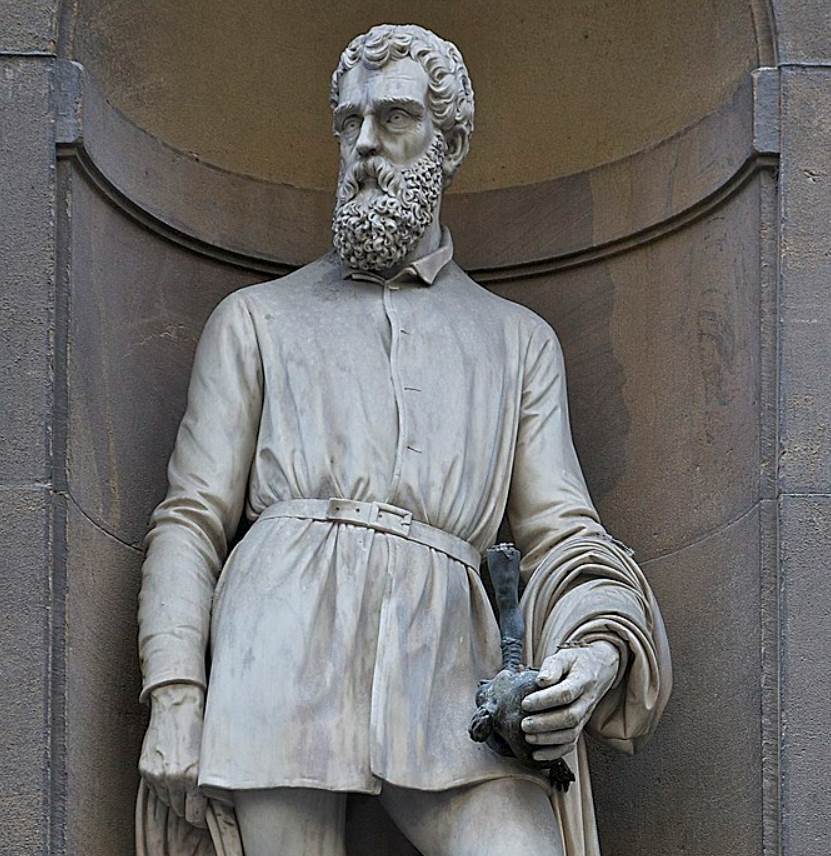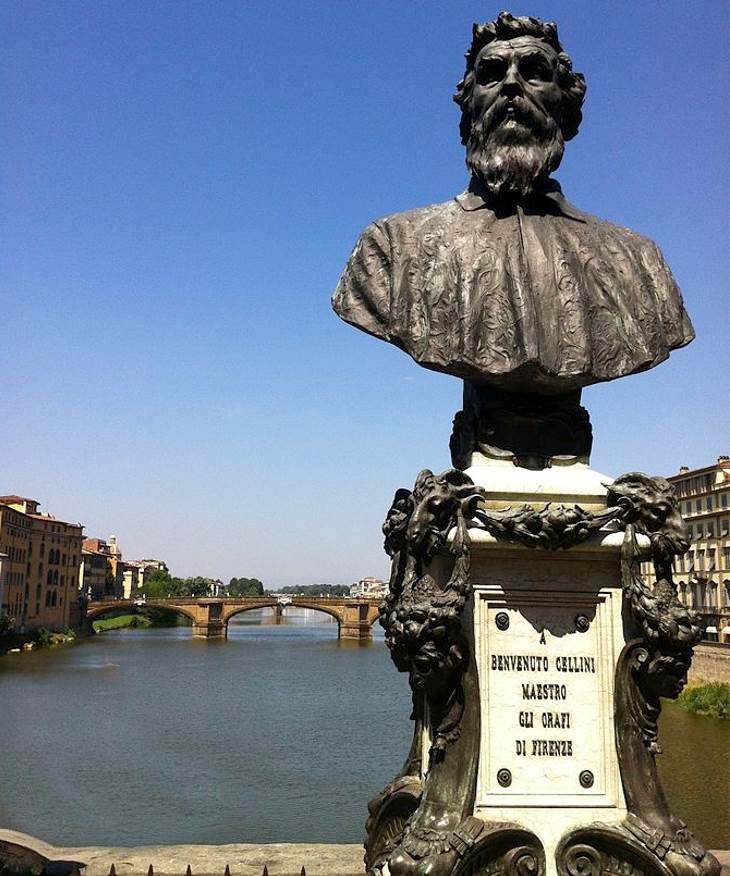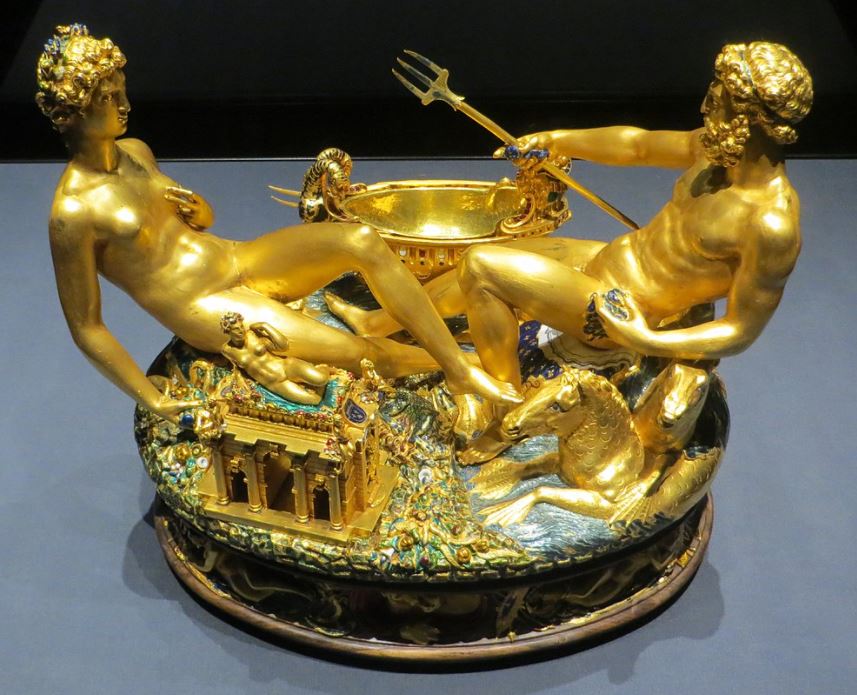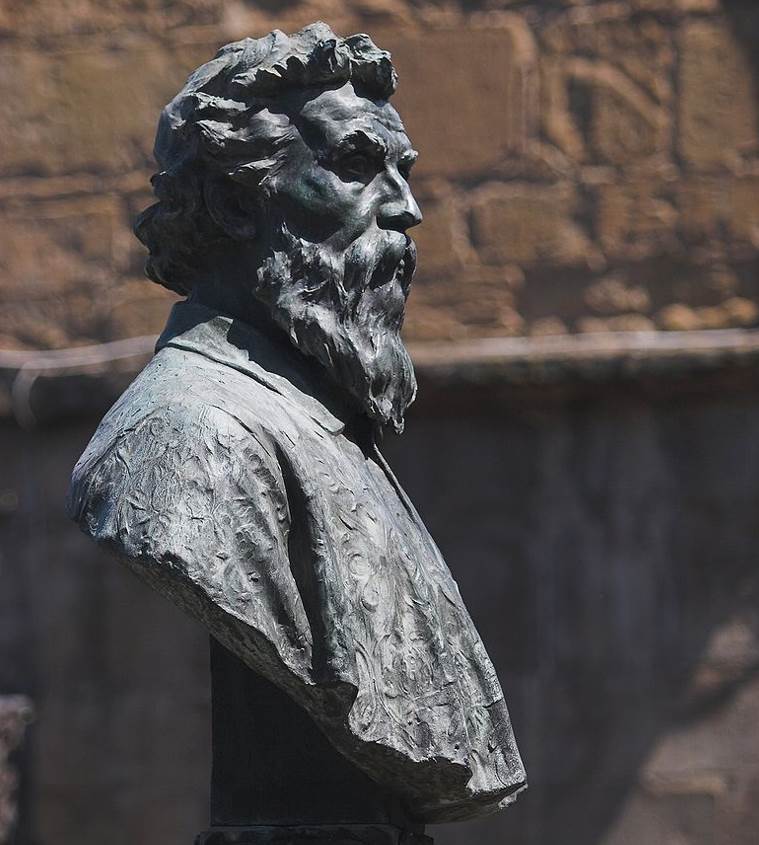One of the greatest artists of the Mannerist period also wrote an autobiography about his turbulent life. He also created some of the most remarkable sculptures and decorations for some of the most important people in Europe, including the King of France.
Let’s take a closer at some of the most interesting facts about Benvenuto Cellini, a Renaissance sculptor, draftsman, goldsmith, and author who had more than one interesting story to tell.
1. He was born in Florence in the early 16th century
Benvenuto Cellini was born on November 3, 1500, and raised in Florence, the capital of the Tuscany region in Italy. His father was a musician and musical instrument builder and the family hoped that the young Benvenuto would follow in his father’s footsteps.
This didn’t happen because his talent lay in another art form, namely that of a goldsmith and sculptor. He started his apprenticeship at the age of 15 with a local goldsmith named Antonio di Sandro to develop his talent.
He eventually ended being a successful goldsmith, sculptor, and author who wrote his autobiography which he started at the age of 58.

2. The young Cellini was an infamous brawler
Although the early 16th century was a period that extremely talented individuals created some of the most famous artworks in history, it was also a period that brawling over petty things was quite common.
You might have read about the exploits of Caravaggio a century later, and the young Benvenuto could hold a candle to the infamous reputation of the Baroque master.
Benvenuto got into a brawl at the age of 16 together with some friends and was banished from Florence for 6 months because of this incident. He briefly moved to Siena where his talent as a goldsmith was noticed again, saving him from a life of poverty.
3. He moved around quite a bit before settling in Rome
It’s fair to conclude that his life was quite turbulent following this ordeal as he moved around quite a bit after living in Siena. This is his track record of Benvenuto Cellini as far as we know:
- From Siena, he moved to Bologna.
- He spent some time in Pisa.
- There were two periods in between in which he lived in Florence.
- He moved to Rome at the age of 19.
The benefit of moving around so much was that he was able to meet a lot of people who helped him in his career.
Unfortunately, also some equally violent people such as Pietro Torregiano, the man who bought the Renaissance to England but whose career is overshadowed by an incident in which he broke the nose of Michelangelo during a brawl.

4. He allegeldy caused the Sack of Rome of 1527
The creation of several fascinating works of art in Rome, including but not limited to a silver casket, silver candlesticks, a vase, and a gold medallion called “Leda and the Swan,” is overshadowed by a crucial event in Cellini’s life.
During a period in which mutinous troops of Charles V, Holy Roman Emperor, attacked Rome, he allegedly killed Duke Charles III, the man who commanded these troops. This incident resulted in the Sack of Rome in 1527.
Apart from describing the incident and the Sack of Rome in full detail in his autobiography, his heroism during this event also resulted in the reconciliation with the Florentine government, allowing him to return home.
5. He is commemorated on the most famous bridge in Florence
Describing the life of Benvenuto Cellini as turbulent is an understatement. while back in Florence he was the victim of a false charge and sent back to Rome to be enprisoned at the Castel Sant’Angelo, constantly fearing for his life as he was bound to be executed.
His good relationship with the wife of the man who accused him and Cardinal d’Este of Ferrara eventually secured his release. From Rome, he moved to France where he worked at the court of King Francis I of France, creating multiple masterpieces at the Château de Fontainebleau.
His period in France was productive and controversial at the same time, often resulting in violence and accusations. He returned to Florence after a couple of years where he worked for Duke Cosimo I de’ Medici.
Even though his life was controversial, to say the least, he is still commemorated in several places in his hometown of Florence. This includes a statue at the Piazzale degli Uffizi, the courtyard of the Uffizi Gallery Museum, and a bust on the Ponte Vecchio, the most famous bridge in the city.

More interesting facts about Benvenuto Cellini
6. Most of the controversy in the life of Benvenuto Cellini came from his violent temper, but this wasn’t the only crime he was often accused of. He was accused on multiple occasions of sodomy with both men and women.
This also included a female lover in France who accused him of using her “in the Italian fashion.” This was most probably the main reason why he abandoned the privileged position of working for the King of France to return to his hometown of Florence.
7. One of Cellini’s most famous works was created during his stay in France. This is a huge bronze relief called the “Nymph of Fontainebleau” and was supposed to decorate the “Porte Dorée” or the “Golden Gate” of the Château de Fontainebleau.
This was Cellini’s first large-scale bronze cast but was never installed in its intended location. Instead, it was installed above the entrance gate of another castle in France called the Château d’Anet. It was eventually moved to the Louvre Museum shortly after the start of the French Revolution in 1797.

8. Arguably his most famous work is also the only work in precious metal that can be positively attributed to Cellini called the “Cellini Salt Cellar.” This work was created for King Francis 8 of France in 1543.
This remarkable work of art became the property of the Habsburg rulers after Charles IX of France gave it as a present to Archduke Ferdinand II of Tyrol. This means that it can now be admired in the Kunsthistorisches Museum, a popular museum in Vienna.

9. Cellini was saved on multiple occasions because of his enormous talent. He didn’t just escape the death penalty while being enprisoned at the Castel Sant’Angelo in Rome but was also saved by the Medici family from spending 4 years in prison.
He received this sentence following yet another accusation of sodomy with one of his apprentices named Fernando di Giovanni di Montepulciano. The mediation of the Medici family reduced this sentence to 4 years of house arrest instead.
10. Benvenuto Cellini was not a man to be messed with, that’s for sure. He also wasn’t exactly shy about his exploits as well, something that become clear from his writings in his autobiography. Here’s how he dealt with an accusation against him in France:
When certain decisions of the court were sent me by those lawyers, and I perceived that my cause had been unjustly lost, I had recourse for my defence to a great dagger I carried; for I have always taken pleasure in keeping fine weapons. The first man I attacked was a plaintiff who had sued me; and one evening I wounded him in the legs and arms so severely, taking care, however, not to kill him, that I deprived him of the use of both his legs. Then I sought out the other fellow who had brought the suit, and used him also such wise that he dropped it.
Nobody accused him anymore in France after this incident. This anecdote pretty much explains what kind of a man Cellini was if he felt an injustice was bestowed upon him.



